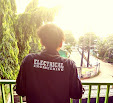 |
| Car Parking Sensor circuit |
All distances mentioned before can vary, depending on infra-red transmitting and receiving LEDs used
and are mostly affected by the color of the reflecting surface. Black surfaces lower greatly the device sensitivity. Obviously, you can use this circuit in other applications like liquids level detection, proximity devices etc.
and are mostly affected by the color of the reflecting surface. Black surfaces lower greatly the device sensitivity. Obviously, you can use this circuit in other applications like liquids level detection, proximity devices etc.
Note:
- The infra-red Photo Diode D2, should be of the type incorporating an optical sunlight filter: these components appear in black plastic cases. Some of them resemble TO92 transistors: in this case, please note that the sensitive surface is the curved, not the flat one.
- Avoid sun or artificial light hitting directly D1 & D2.
- If your car has black bumpers, you can line-up the infra-red diodes with the (mostly white) license or number plate.
- It is wiser to place all the circuitry near the infra-red LEDs in a small box. The 3 signaling LEDs can be placed far from the main box at an height making them well visible by the car driver.
- The best setup is obtained bringing D2 nearer to D1 (without a reflecting object) until D5 illuminates; then moving it a bit until D5 is clearly off. Usually D1-D2 optimum distance lies in the range 1.5-3 cm.
R1 : 10K
R2,R5,R6,R9 : 1K
R3 : 33R
R4,R11 : 1M
R7 : 4K7
R8 : 1K5
R10,R12-R14 : 1K
C1,C4 : 1µF/63V
C2 : 47pF
C3,C5 : 100µF
D1 : Infra-red LED
D2 : Infra-red Photo Diode (see Notes)
D3,D4 : 1N4148
D5-7 : LEDs (Any color and size)
IC1 : NE555
IC2 : LM324
IC3 : LM7812




0 komentar:
Posting Komentar